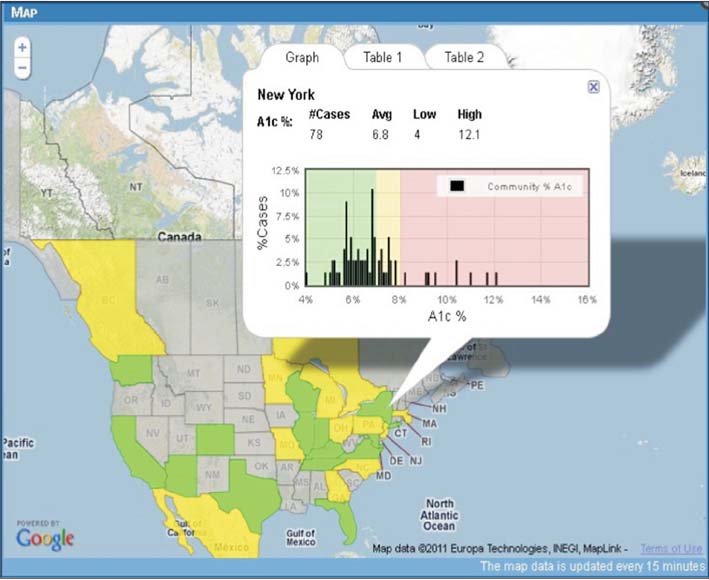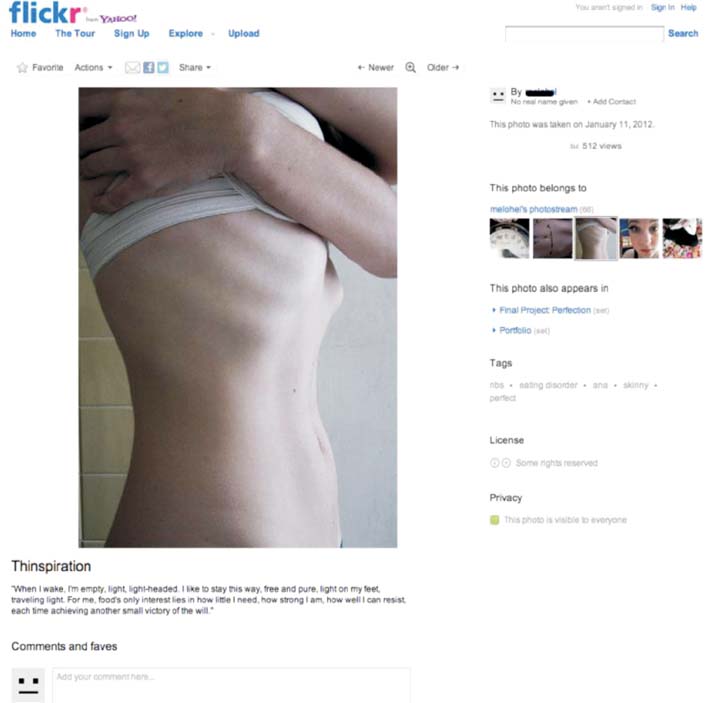Healthc Inform Res.
2015 Apr;21(2):67-73. 10.4258/hir.2015.21.2.67.
Health and Social Media: Perfect Storm of Information
- Affiliations
-
- 1Northern Research Institute, Tromso, Norway. luis.luque@norut.no
- 2Mobile Health Global, Barcelona, Spain.
- KMID: 2284609
- DOI: http://doi.org/10.4258/hir.2015.21.2.67
Abstract
OBJECTIVES
The use of Internet in the health domain is becoming a major worldwide trend. Millions of citizens are searching online health information and also publishing content about their health. Patients are engaging with other patients in online communities using different types of social media. The boundaries between mobile health, social media, wearable, games, and big data are becoming blurrier due the integration of all those technologies. In this paper we provide an overview of the major research challenges with the area of health social media.
METHODS
We use several study cases to exemplify the current trends and highlight future research challenges.
RESULTS
Internet is exploding and is being used for health purposes by a great deal of the population. Social networks have a powerful influence in health decisions. Given the lack of knowledge on the use of health social media, there is a need for complex multidisciplinary research to help us understand how to use social networks in favour of public health. A bigger understanding of social media will give health authorities new tools to help decision-making at global, national, local, and corporate level.
CONCLUSIONS
There is an unprecedented amount of data that can be used in public health due the potential combination of data acquired from mobile phones, Electronic Health Records, social media, and other sources. To identify meaningful information from those data sources it is not trial. Moreover, new analytics tools will need to be developed to analyse those sources of data in a way that it can benefit healthcare professionals and authorities.
Keyword
MeSH Terms
Figure
Cited by 2 articles
-
Social Media in Clinical Practice
Mona Choi
Healthc Inform Res. 2015;21(2):138-140. doi: 10.4258/hir.2015.21.2.138.New Evaluation Vector through the Stanford Mobile Inquiry-Based Learning Environment (SMILE) for Participatory Action Research
Paul Kim, Ji-Young An
Healthc Inform Res. 2016;22(3):164-171. doi: 10.4258/hir.2016.22.3.164.
Reference
-
1. International Telecommunication Union. Measuring the Information Society Report 2014. Geneva: International Telecommunication Union;2014.2. Fernandez-Guerrero IM. "WhatsAppitis". Lancet. 2014; 383(9922):1040.
Article3. Korea Internet & Security Agency. 2013 Survey on the Internet usage [Internet]. Seoul: Korea Internet & Security Agency;2015. 2015 Apr 15. Available from: http://isis.kisa.or.kr.4. Research2Guidance. Mobile health economics [Internet]. Berlin: Research2Guidance;2014. 2015 Apr 15. Available from: http://mhealtheconomics.com.5. Bender JL, Yue RY, To MJ, Deacken L, Jadad AR. A lot of action, but not in the right direction: systematic review and content analysis of smartphone applications for the prevention, detection, and management of cancer. J Med Internet Res. 2013; 15(12):e287.
Article6. Chomutare T, Fernandez-Luque L, Arsand E, Hartvigsen G. Features of mobile diabetes applications: review of the literature and analysis of current applications compared against evidence-based guidelines. J Med Internet Res. 2011; 13(3):e65.
Article7. European Commission. Summary report on the public consultation on the green paper on mobile health. Brussels: European Commission;2015.8. European Commission. European citizen's digital health literacy. Brussels: European Commission;2014.9. Alexa. The top 500 sites on the web [Internet]. San Francisco (CA): Alexa;2015. 2015 Apr 15. Available from: http://www.alexa.com/topsites.10. Griffis HM, Kilaru AS, Werner RM, Asch DA, Hershey JC, Hill S, et al. Use of social media across US hospitals: descriptive analysis of adoption and utilization. J Med Internet Res. 2014; 16(11):e264.
Article11. Van de Belt TH, Berben SA, Samsom M, Engelen LJ, Schoonhoven L. Use of social media by Western European hospitals: longitudinal study. J Med Internet Res. 2012; 14(3):e61.
Article12. Van De Belt TH, Engelen LJ, Berben SA, Schoonhoven L. Definition of Health 2.0 and Medicine 2.0: a systematic review. J Med Internet Res. 2010; 12(2):e18.
Article13. P2P Foundation. Definition of Apomediation [Internet]. [place unknown]: P2P Foundation;2010. 2015 Apr 15. Available from: http://p2pfoundation.net/Apomediation.14. Chomutare T, Arsand E, Fernandez-Luque L, Lauritzen J, Hartvigsen G. Inferring community structure in healthcare forums: an empirical study. Methods Inf Med. 2013; 52(2):160–167.15. Esquivel A, Meric-Bernstam F, Bernstam EV. Accuracy and self correction of information received from an internet breast cancer list: content analysis. BMJ. 2006; 332(7547):939–942.
Article16. Bernstam EV, Walji MF, Sagaram S, Sagaram D, Johnson CW, Meric-Bernstam F. Commonly cited website quality criteria are not effective at identifying inaccurate online information about breast cancer. Cancer. 2008; 112(6):1206–1213.
Article17. TuDiabetes.org. Information about TuAnalyze [Internet]. [place unknown]: TuDiabetes.org;2010. [cited at 2010 May 30]. Available from: http://www.tudiabetes.org/forum/topics/tuanalyze-is-here.18. Weitzman ER, Kelemen S, Mandl KD. Surveillance of an online social network to assess population-level diabetes health status and healthcare quality. Online J Public Health Inform. 2011; 3(3):1–12.19. World Health Organization. WHO fact file [Internet]. Geneva: World Health Organization;2015. 2015 Apr 15. Available from: http://www.who.int/features/factfiles/diabetes/facts/en/.20. Norwegian Centre for Integrated Care and Telemedicine. Diabetes and self-management [Internet]. Tromso: Norwegian Centre for Integrated Care and Telemedicine;2015. 2015 Apr 15. Available from: http://www.telemed.no/diabetes-and-self-management.4982935-162159.html.21. Glu. Big blue test [Internet]. [place unknown]: Glu;2015. 2015 Apr 15. Available from: https://myglu.org/articles/big-blue-test-results.22. Research2Guidance. Diabetes app market report 2014. . Berlin: Research2Guidance;2014.23. Bonato P. Advances in wearable technology and its medical applications. Conf Proc IEEE Eng Med Biol Soc. 2010; 2010:2021–2024.
Article24. Bassett DR Jr, Rowlands A, Trost SG. Calibration and validation of wearable monitors. Med Sci Sports Exerc. 2012; 44:1 Suppl 1. S32–S38.
Article25. Cafazzo JA, Casselman M, Hamming N, Katzman DK, Palmert MR. Design of an mHealth app for the selfmanagement of adolescent type 1 diabetes: a pilot study. J Med Internet Res. 2012; 14(3):e70.
Article26. Google Play. Thinspo application [Internet]. Mountain View (CA): Google;2015. 2015 Apr 15. Available from: https://play.google.com/store/apps/details?id=com.github.browep.thinspo.27. Syed-Abdul S, Fernandez-Luque L, Jian WS, Li YC, Crain S, Hsu MH, et al. Misleading health-related information promoted through video-based social media: anorexia on YouTube. J Med Internet Res. 2013; 15(2):e30.
Article28. Yom-Tov E, Fernandez-Luque L, Weber I, Crain SP. Proanorexia and pro-recovery photo sharing: a tale of two warring tribes. J Med Internet Res. 2012; 14(6):e151.
Article29. Betsch C, Sachse K. Special issue: the role of internet use in vaccination decisions. Vaccine. 2012; 30(25):3723–3818.30. European Centre for Disease Prevention and Control. Communication on immunisation: building trust. Stockholm: European Centre for Disease Prevention and Control;2012.31. National Vaccine Information Center [Internet]. Sterling (VA): National Vaccine Information Center;2015. 2015 Apr 15. Available from: http://www.nvic.org/.32. Briones R, Nan X, Madden K, Waks L. When vaccines go viral: an analysis of HPV vaccine coverage on You-Tube. Health Commun. 2012; 27(5):478–485.
Article33. Yom-Tov E, Fernandez-Luque L. Information is in the eye of the beholder: seeking information on the MMR vaccine through an Internet search engine [Internet]. Bethesda (MD): American Medical Informatics Association;2014. 2015 Apr 15. Available from: http://knowledge.amia.org/56638-amia-1.1540970/t-004-1.1544972/f-004-1.1544973/a-227-1.1544992/an-227-1.1544993?qr=1.34. Salathe M, Khandelwal S. Assessing vaccination sentiments with online social media: implications for infectious disease dynamics and control. PLoS Comput Biol. 2011; 7(10):e1002199.
Article35. The Vaccine Confidence Project [Internet]. [place unknown]: The Vaccine Confidence Project;2015. 2015 Apr 15. Available from: http://www.vaccineconfidence.org/.36. The Vaccine Confidence Project. Partners and collaborators [Internet]. [place unknown]: The Vaccine Confidence Project;2015. 2015 Apr 15. Available from: http://www.vaccineconfidence.org/about/#partners.37. HealthMap [Internet]. [place unknown]: HealthMap;2015. 2015 Apr 15. Available from: http://www.healthmap.org/.38. Oyeyemi SO, Gabarron E, Wynn R. Ebola, Twitter, and misinformation: a dangerous combination. BMJ. 2014; 349:g6178.
Article39. Kelion L. Ebola text-message system set to expand [Internet]. London: BBC News;2014. 2015 Apr 15. Available from: http://www.bbc.com/news/technology-29610865.40. Salathe M, Bengtsson L, Bodnar TJ, Brewer DD, Brownstein JS, Buckee C, et al. Digital epidemiology. PLoS Comput Biol. 2012; 8(7):e1002616.
Article
- Full Text Links
- Actions
-
Cited
- CITED
-
- Close
- Share
- Similar articles
-
- Use of Social Media to View and Post Dentistry-related Information in Bahrain: A Cross-Sectional Study
- A proof-of-concept study of extracting patient histories for rare/intractable diseases from social media
- A study on the weight control behavior according to cluster types of the motivation to use social media among university students in the Jeonbuk area
- An Observational Study in Manipur State, India on Preventive Behavior Influenced by Social Media During the COVID-19 Pandemic Mediated by Cyberchondria and Information Overload
- The Relationship between Social Network Service Use Motives and Subjective Well-Being: The Mediating Effect of Online and Offline Social Capital




